The soil on my property on the outskirts of Kyneton is very sandy and is low in many nutrients required for optimal plant growth. In October 2019, I conducted a soil test in our orchard. The soil tests were taken at ten sites across the paddock, each one to a depth of 20 cm. All of the ten tests were conducted on undisturbed soil. That is, soil that I had not cultivated or improved for the sake of growing vegetables.
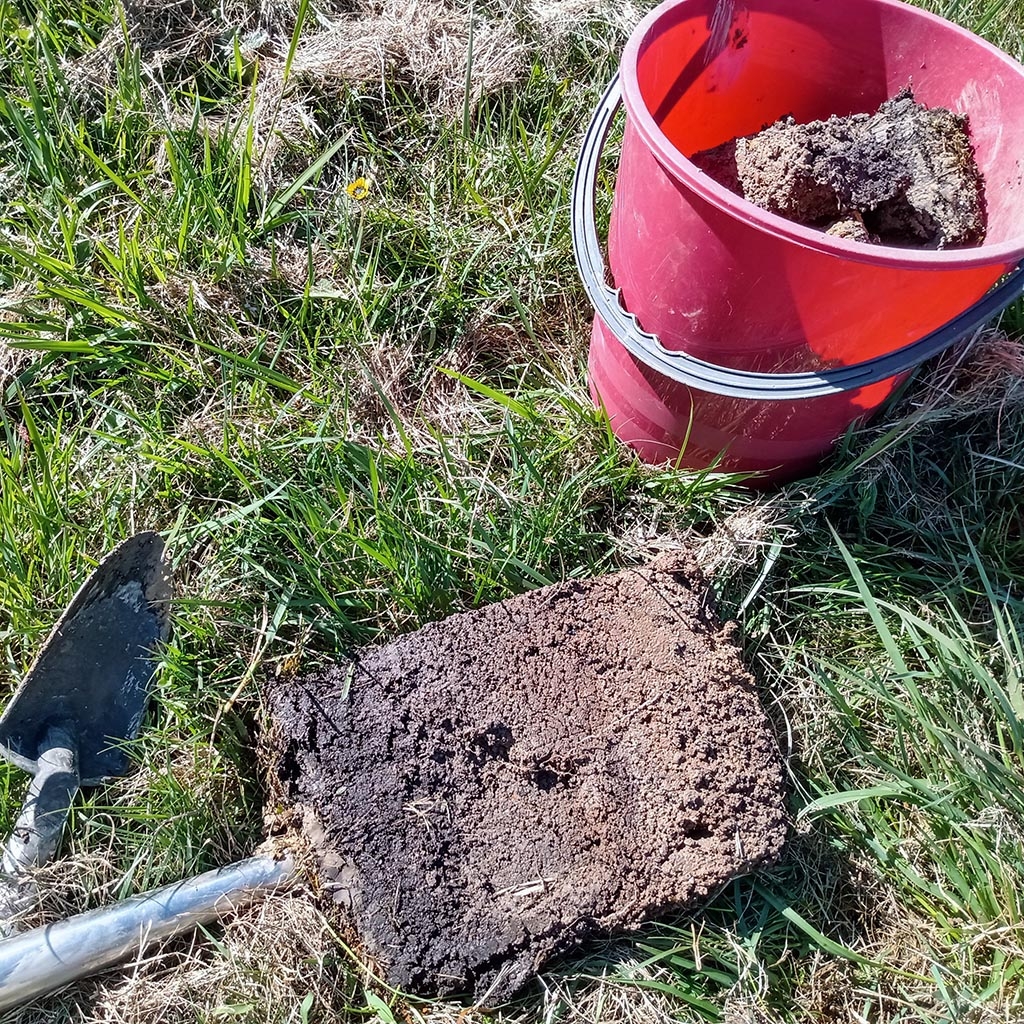
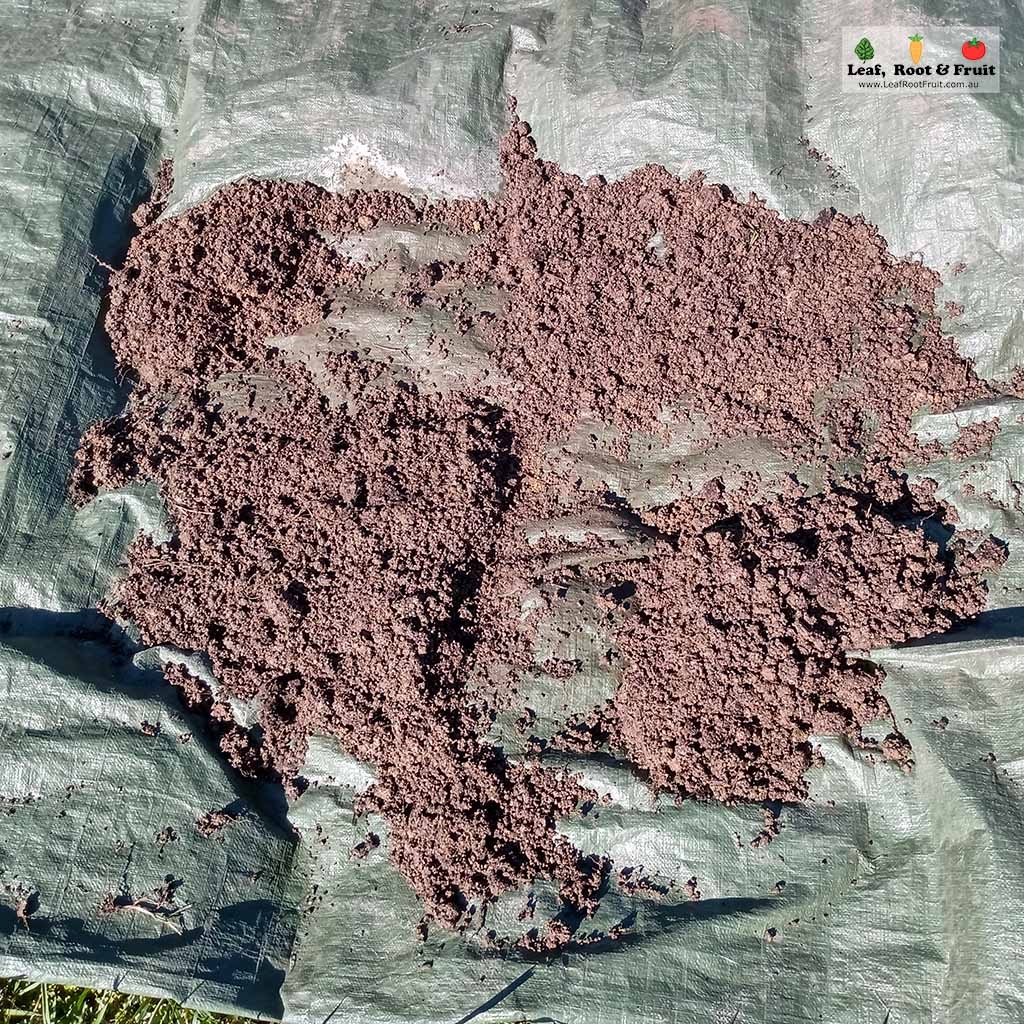
The ten soil samples were combined, and the composite sample sent off for testing at EAL laboratories. A month later, I used the subsequent results to calculate rates of soil amendments.
I added quantities of lime, gypsum and guano gold to the paddock as evenly as we could, treating the whole paddock in the same manner. The products I added, aimed to neutralise the very acid soil and add deficient minerals such as calcium, sulphur and potassium.
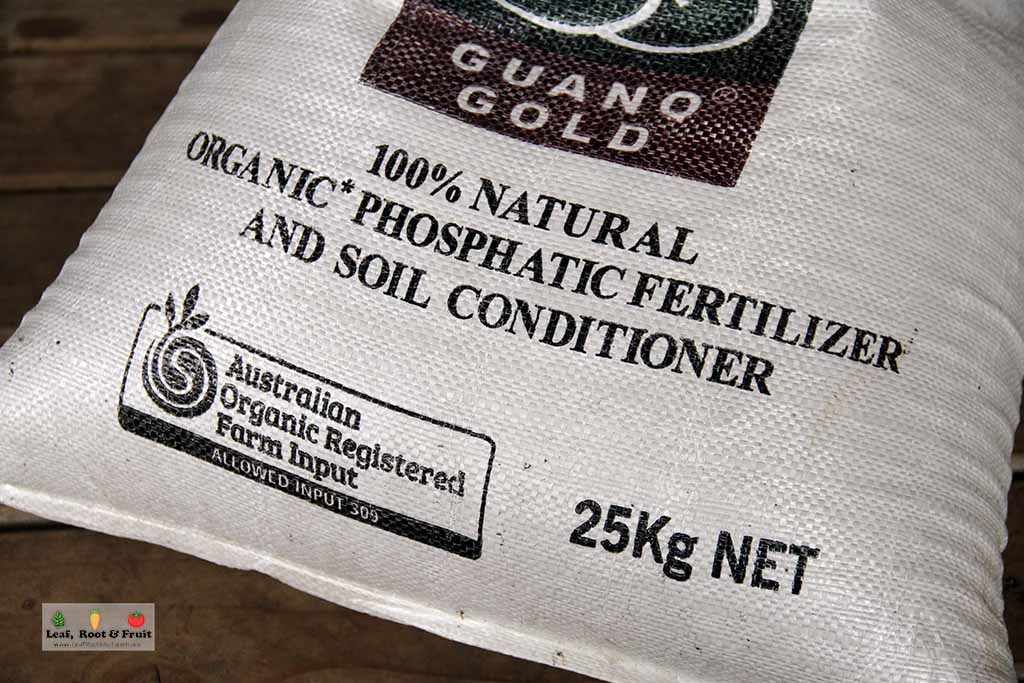
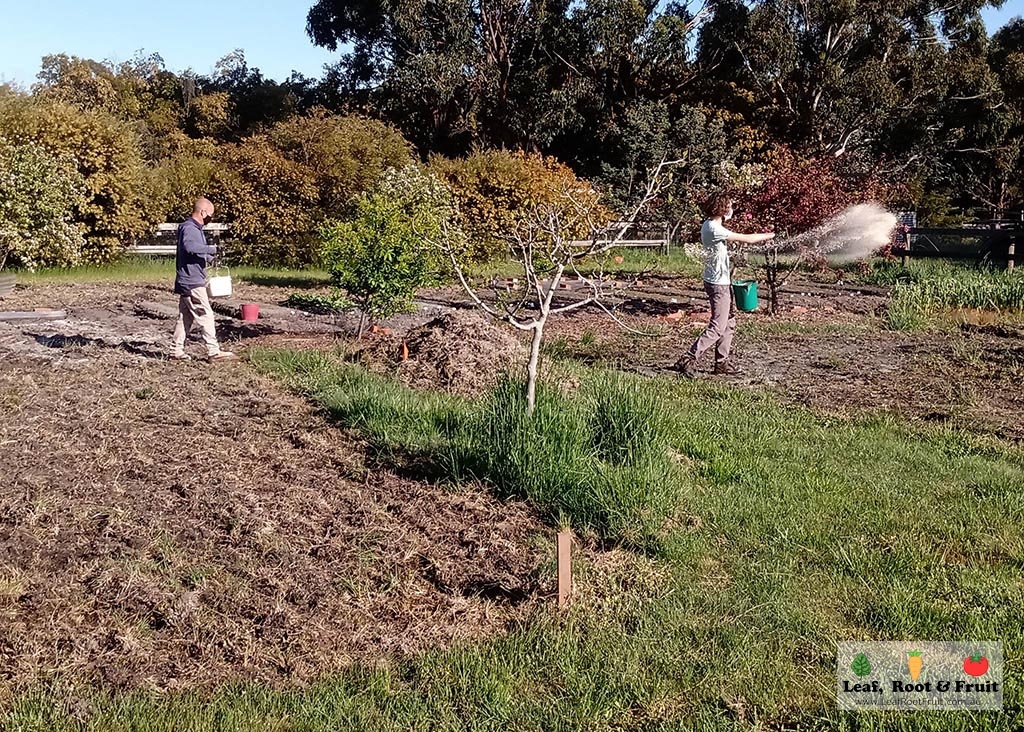
The orchard space is only sparsely planted with fruit trees. For the last two years we have used the large spaces between the trees to grow vegetable crops such as sweet corn, saucing tomatoes, potatoes, pumpkins and melons. Prior to planting, each of these gardening spaces are usually rotary hoed, existing vegetation removed, and quantities of compost added. The compost was sometimes made on site, but often commercially supplied mushroom compost, or cow manure was used.
In June 2021 I conducted a second round of soil samples. In this round of testing, I aimed to first check the outcomes of the soil amendments that we had added. To test this, I took ten soil samples from undisturbed soil as close as possible to the original soil samples sites (some sample sites had since been cultivated so re-sampling was not always possible).
The second aim of the testing was to compare the influence of cultivation and compost addition. To do this we took ten samples of soil from my market garden beds. These beds had received the same soil amendments as the undisturbed soil. The only difference with the soil in this test was that it had been cultivated and compost had been incorporated. Therefore, we have a direct comparison of undisturbed soil vs the addition of compost (and cultivation).
A summary of the results for the three tests are shown below
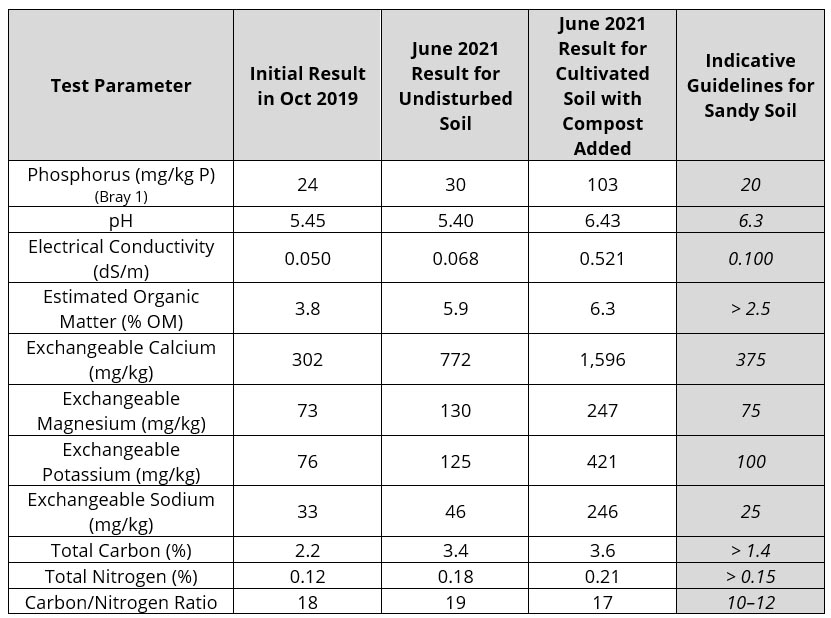
The table above shows that the soil amendments caused a small but positive increase in phosphorus, exchangeable calcium, exchangeable magnesium, exchangeable potassium and exchangeable potassium. Surprisingly, it had virtually no effect on the pH of the soil.
On the other hand, cultivation of the soil and the addition of large amounts of compost had large positive impacts on most of the parameters. Most influential was the change in pH. The availability of soil nutrients to plants is heavily influenced by soil pH.
Whilst the addition of compost will also add many of the nutrients, the change in pH will facilitate the increase of exchangeable nutrients that already exists in the soil. For example, Low pH often ‘locks up’ elements in the soil such as phosphorus, potassium, sulphur, magnesium and calcium. A shift of the soil pH towards neutral will increase their availability. I discuss this in more detail in my post on the dangers of adding Epsom salts to the garden.
Soil Tests Of Your Own Garden Soil
Soil tests are a great way to understand the nutrient levels in your garden soil. However, they can be relatively expensive to undertake. Suburban gardeners should consider the following before undertaking soil testing:
- If the property history is unknown and/or the property has been developed for some time, then the composition of the soil may different for areas just one metre away
- Soil nutrients can be impacted in a very local way through items such as concrete (leaches calcium and can make the soil more alkaline), animals (poultry can increase nitrogen levels in the immediate vicinity), drainage, existing trees (may exhaust nutrients) and run-off from neighbouring properties. Soil testing may not be reflective of other areas on the site, or indeed the whole site
- Recently developed blocks may have been subjected to extensive earth moving, or the importation of soil. The soil may exist in layers. This will influence the soil composition and nutrient levels. Testing may provide misleading results.
- Raised garden beds may have been filled with imported soil. This soil composition will be different to the ‘in ground’ soil. The nutrient composition also may be different for different raised garden beds, if they were filled at different times or from different soil deliveries.
Large blocks of land, particularly rural acreages are likely (but not always) to have a more consistent soil composition. Soil testing is more justifiable in these instances.
This case study highlights that backyard gardeners should focus on the addition of compost to their garden soil to improve it. Compost will improve sandy soil, clay soil, low pH, high pH and most other soil issues. Soil testing to calculate soil amendments is not usually advised or beneficial for small space gardeners. Compost is the key to growing great food!
See this post for more information about nutrient deficiencies in your vegetable patch.
This post talks about how to use compost in the garden
And this post discusses different composting systems and a handy flow chart to help you decide which one is right for you.
Want to know more about compost, soil testing and nutrients? My workshop series The Science of Edible Gardening delves deep into these topics. The March, August and September workshops in particular focus on soil. They are repeated annually. Head to the events page to see upcoming workshops
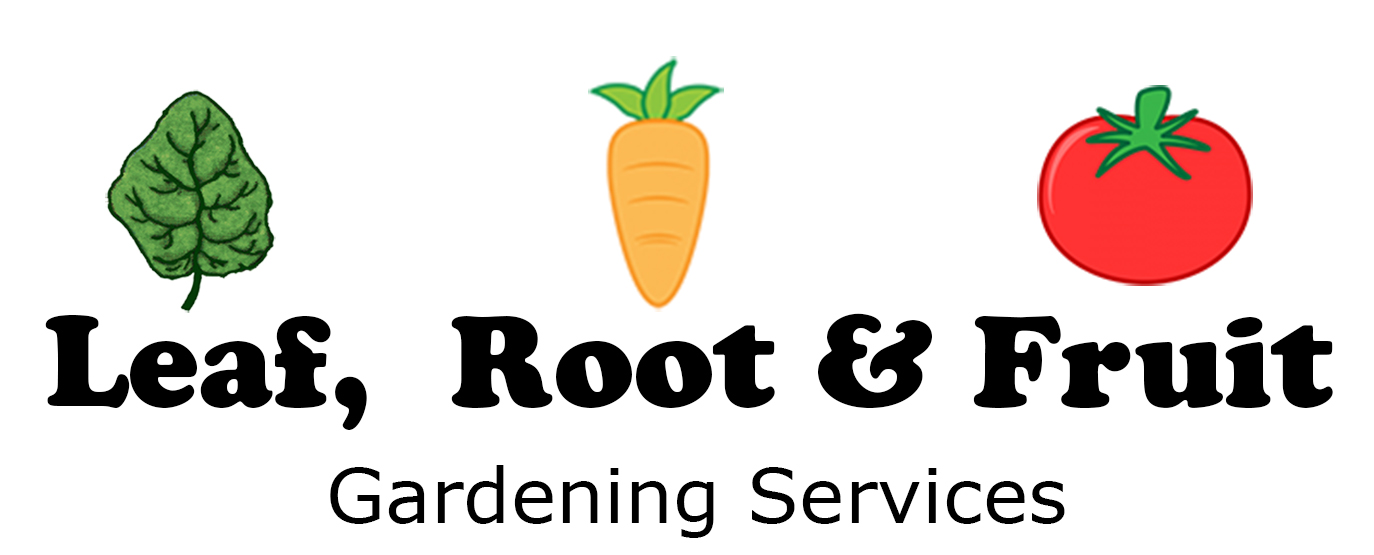

You probably read Pat Colbey’s book about Healthy Soil. Good if you raise some animals as well.
Hi Barbara,
Great tip. We use poultry as part of our fertility cycle. They are rotated through the market garden, orchard and other spaces using a chicken tractor and electric fence netting.
Happy Gardening!
I really enjoy these experiments you are conducting Duncan.
Whilst we produce our own compost, we find it takes 6 months to produce one bin full(4 adults). Therefore we either buy bags from Bunnings or a trailer load from a supplier. I’m unsure which of these 2 options are better.
Hi John,
Thanks for the great feedback. At least the trailer load doesn’t produce plastic waste like the bags do. It’s usually cheaper in the long run too. It really depends on the quality of the product that you are getting. Finding a reliable supply of compost can be difficult.
Good Luck & Happy Gardening!
Duncan
do you recommend a particular brand of commercial compost.
Hi Janice,
Thanks for your question. I’m reluctant to recommend any particular compost products as I find there is much variability between and within products.
Good Luck & Happy Gardening
Duncan
I have a tumbler compost bin two separate sides. Which is great and rich with worms however it is quite wet. I do include paper & cardboard still very wet – Any suggestions? appreciated.
Hi Agnes,
If the worms are happy then I wouldn’t worry about it too much. If you really want to do something then you could increase the size of the drainage holes and add a lot more carbon.
I cover this issue in a bit more detail in this article on compost.
Happy gardening
Duncan
The first question is:- how much compost do you apply / dig in? I have two bays for compost about 4ftx4ft each. One sits there full rotting down, the other being added to. We are able to compost lawn cuttings, shredded paper, kitchen waste and garden plants, veggies that have finished, peas, beans sweet peas. The latter I put through a shredder first. I mix in some blood and bone. I stir it up now and again and add water if it gets dry. It still takes at least 4 months, sometimes longer to get a nice crumbly consistency.
The second question is:- can the process be speeded up?
Thanks, Steve
Hi Steve,
Thanks for your questions. They have been answered for you in following articles:
How to use compost in the vegetable patch. How much to add depends on the crop you are growing. This is covered in my article on crop rotation.
You can speed it up using a hot compost. More on that (including a handy video on hot composting) here.
Happy gardening
Duncan